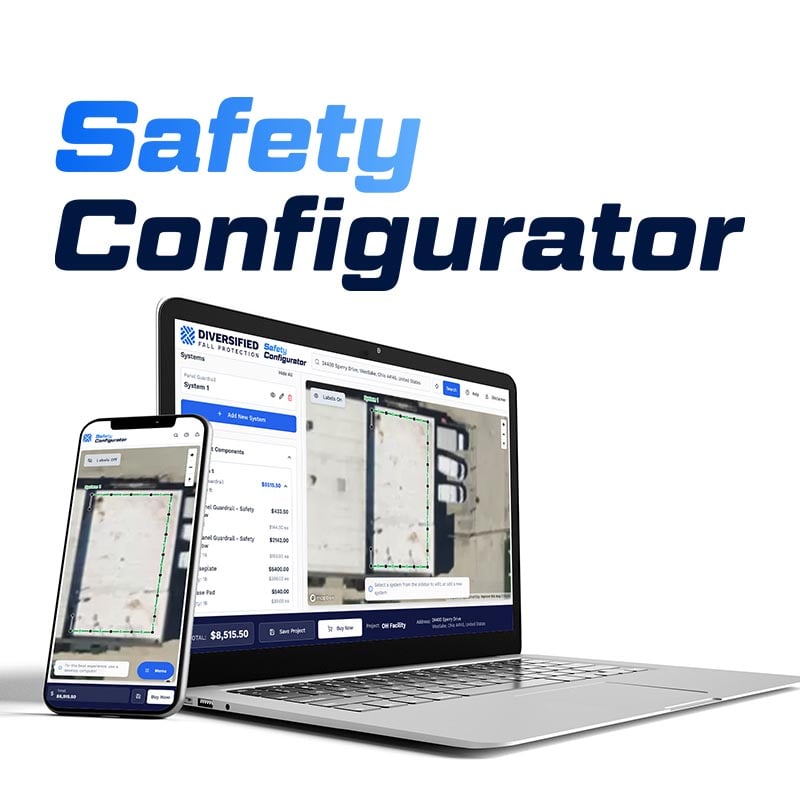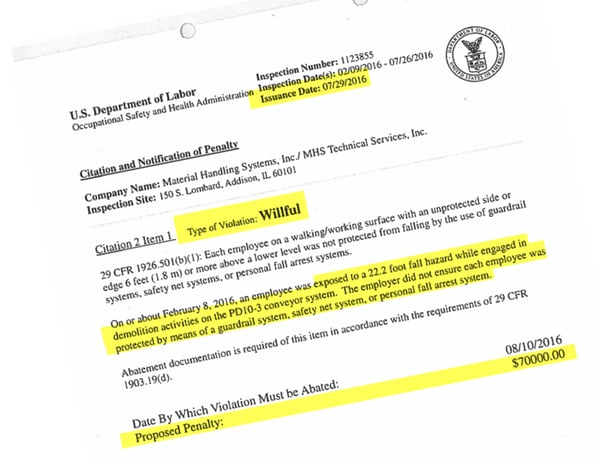What You Can Learn From Another Company’s Willful Neglect For Workplace Safety
Four months ago, OSHA cited Material Handling Systems/MHS Technical Services for failure to provide fall protection for their employees working on conveyor systems at an Illinois United Parcel Service facility. Last month, a 42-year-old MHS employee fell 22 feet to his death at the same UPS facility. OSHA has fined MHS $320,000 due to the company’s “serial disregard of fall protection.”
We are dedicating a Tech Talk post to this tragic story because it tells a cautionary tale we should all heed. For starters, the accident victim could have been your father, son, or husband—and this is a workplace death that could have been prevented.
MHS has a track-record of similar fall protection citations dating back to 2009, with the most recent instance occurring in October 2015 (in the same Illinois UPS hub where a worker lost his life). This most recent tragedy wasn’t a fluke accident, but rather, it represents a pattern of disregard for worker safety.
OSHA cited MHS with three willful, three repeated, and three serious safety violations, but the question remains—when will company management stop viewing OSHA citations “as a cost of doing business” and start protecting its employees when working at heights? This is what willful neglect for workplace safety looks like:
Companies with safety track records similar to MHS’s often land in OSHA’s Severe Violator Enforcement Program (also known as SVEP). Removing your company from this list is a time-consuming process that can take years—and many upstanding corporate citizens refuse to do business with companies on the SVEP list. If you aren’t motivated to provide fall protection for your employees because it’s simply the right thing to do, and if OSHA fines are compelling enough, think long and hard about the economic impact of losing your best customers for three or four years. Put in this context, an investment in even the most robust fall protection solution pales by comparison.
We want to mention one last reason why this story is relevant to every company owner, c-suite manager, and CEO—risk exposure. If you have been reading carefully, you may wonder why UPS was not cited for a fatality that occurred at one of its facilities. Our best explanation is that UPS had specific language in their service contract requiring MHS to provide fall protection for its workers while on site. Barring this language, UPS could have been found liable in civil court—and OSHA could have cited UPS as well.
Coming from a company that specializes in protecting workers at heights, this blog post may seem like a shameless plug for our services. That said, the moral here is simple: if you don’t provide fall protection for your contractors, and you don’t specify that all contractors shall provide their employees with a safe means to work at heights, your business is at risk. Read your service agreements carefully—and be mindful that there are a variety of fall protection solutions to meet your specific applications and budget.
The story shared above speaks to why we do what we do here. Life is precious, and the working people who form the backbone of our economy deserve to go home to their families at the end of each day. We do our part by educating our clients about fall protection and providing the turnkey solutions that keep their employees safe while working at heights. If you share our vision, perhaps we should talk.
To learn more about fall protection, or to discuss ways to create a safer work environment for your employees and contractors, contact Diversified Fall Protection for further assistance.
Schedule an assessment with Diversified Fall Protection
Contact Us to request a fall safety review

b-1.jpg?width=1368&height=1340&name=Rail%20(175)b-1.jpg)


